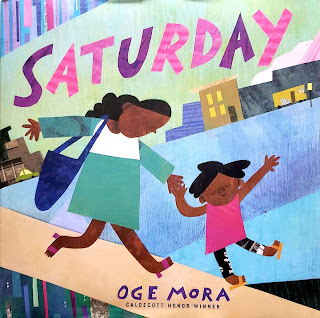Anti-Bias Book Review: My Food, Your Food, Our Food
Book Title: My Food, Your Food, Our Food
Author: Emma Carlson Berne
Emma Carlson Berne is the author of over one hundred and twenty books for juvenile, middle-grade, and young adult readers. Emma lives in Cincinnati, Ohio with her husband and three young sons. She is a keen horseback rider and lover of nature and animals. She enjoys running and walking, hiking, camping, and cooking. (Information from her own website)
Illustrator: Sharon Sordo
Sharon Sordo is an illustrator, cat hugger, and expert soup maker. As a Mexican girl growing up in the United States, Sharon found it difficult to relate to the many characters in children’s books that were available. Since then, she strives to represent different cultural backgrounds through her art. She lives in San Diego, California with her husband and cat (Information from her own website).
My Food, Your Food, Our Food by Emma Carlson Berne is a stunning book that captures the differences in food culture around the world. The author, Emma Carlson Berne depicts vividly how people from different cultures eat in different ways, which provides young learners the opportunity to experience different cultures. The book also uses positive language, and the main theme of the book is to encourage kids from different cultures to respect others’ customs, and to eat together with love and friendship. The illustrator’s Spanish experience also adds great elements to the book. Through painting people of different colors, she stands at the perspective of a minority group child and conveys the message of love and cooperation.
Anti-Bias Elements:
1. Age-appropriate and appealing storyline and illustrations
The author used age-appropriate language that children at a young age can easily understand. The book has no long sentences or difficult words. It is easy for a 4–5 year old child to fully understand what the book wants to express. She also used the strategy of repetition in the book to help kids better learn some of the important concepts. The author repeats “The food we eat are different, east, west, north, or south. But we all need food to keep us strong, so open up your mouth!” This is a short overview of the main theme of the book and through repetition, children can better remember and understand the idea of food.
2. Different lifestyles: respect and eat together
The main message the author wants to convey is all children, regardless of their background, should gather in love, and eat together with others. One thing that she paid the most attention to, is to respect the culture and customs of each group. For example, people in most Asian countries use chopsticks in their daily lives, and people in Indian countries may eat the food by their hand. I was fascinated by how the author and the illustrator write and draw all these cultural practices in the book. They respect the cultural practice of those people, and this is a good idea that covey to the children reading the book. Besides, respecting others, people in different cultures should eat together like friends and family. This is also the anti-bias element that the author wishes to express.
3. Specific culture vocabulary
Because people eat differently in different countries, the author uses much different and special food to represent the culture. She did a particularly good job of highlighting those words so children can better understand what is the words that represent the specific culture. For example, “Fufu” is a kind of Indian food, and “injera” is the food in Ethiopia, Eritrea, and some parts of Sudan. Using this specific cultural vocabulary in the book, children can better understand what the culture really looks like and can have a better understanding of that culture. These words expand their vocabulary but also deepens their knowledge of another culture.
In sum, My Food, Your Food, Our Food by Emma Carlson Berne is a great book that used many anti-bias concepts. She uses a very different angle of food to better make the book tailor to the real life of children and build cultural awareness on the repetition and simple words. That’s the reason why I choose and recommend this book.


Comments
Post a Comment